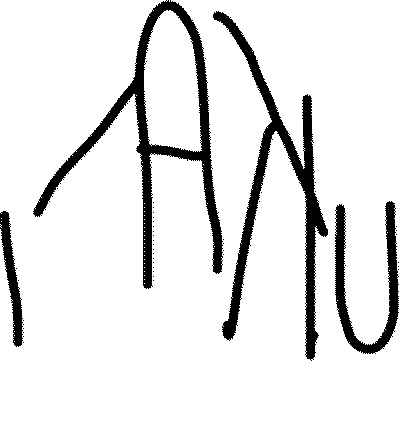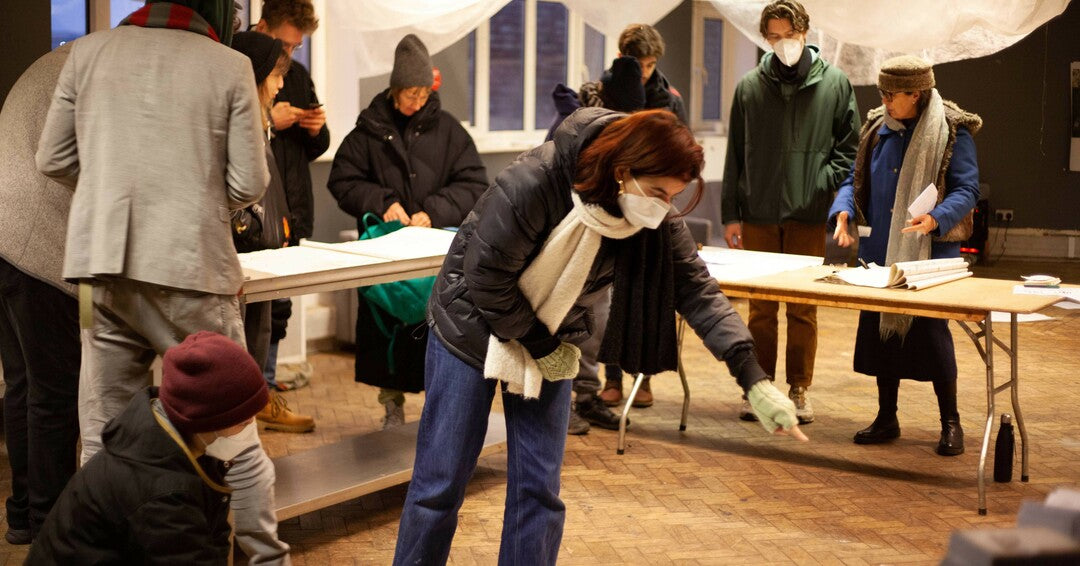The UKAI team went to the UK in December of 2022. We spent just under a week there. Our development lead, Willem Deisinger, was already living in London and so we met him there.
We were in the UK for a number of reasons, including a talk at the University of the Arts London, some meetings, and a workshop for our Restructuring Futures project.
Restructuring Futures is ostensibly about building infrastructure to support creative and cultural collaboration that is resilient to volatile conditions. The project is being realized in partnership with the Laboratory for Artistic Intelligence and Hypha Engineering Co-op.
We want to know what kinds of tools and modalities are appropriate to a world where centralized infrastructure is under constant threat from climate change and rising authoritarianism.
We were generously invited into artist paula roush’s (msdm’s) space in Woolwich after meeting her at a workshop we ran at Museums without Walls in Kingston earlier that year. paula is a ‘guardian’ of an otherwise abandoned space, formerly council housing and a nursery, situated across from a military base. This site of occupation, inhabitation, and gradual regeneration through artistic production seemed an ideal location for our workshop to happen.
When we talk about the project, most see Restructuring Futures as a “support” for artistic creation.
This is certainly true, but we are beginning to understand the project, generously funded through the Canada Council, as a process of artistic creation unto itself, and ideally a model for us going forward.
A recent Instagram post from Fariha Roisin (with attribution to Byung Chul Han) was shared with me by my friend MI’Jan Celie Tho-Biaz over the weekend.
“What is most in need of recovery is culture”, it reads, and “the only way in which we can revitalize culture is through ritual forms”.
It continues:
“Today, culture is held together solely by instrumental and economic relations. But that does not found communities – it isolates people. Art, in particular, should play a central role in the revitalization of rituals. What we need most are temporal structures that stabilize life. When everything is short-term, life loses all stability.”
I thanked Mi’Jan for the share and her reply was that she “had to double take bc I thought surely the credited source was you”. I felt a tremendous rush of pride in reading this. Not because I could be mistaken for folks that I greatly admire, but that the driving impulse in our work is so evident to others, despite it not being quite clear for me all the time yet.
The post, and the work in London, are important reminders that art can do (and has done) other things.
Art’s moment of fever
The institutionalized art world is having a moment of fever. NFTs (remember them) and AI art and all of these algorithmically generated crises are assuming the shape of some novel pathogen like the one that rendered my own almost-50 out-of-shape body immobile for a week this year. The art world is setting itself on fire to drive out a contagion it doesn’t yet understand.
And yes, the body might die, but art is going to be fine.
Algorithms will scrape and steal and produce infinite vistas from whatever clever prompts smart people on Twitter can come up with. And art will be fine.
People will stop funding the opera, or the theatre, or the museum. And art will be fine.
The art world has turned over its economic model to producing things and spectacles and shows, a process begun with some energy decades ago.
Art is vulnerable to the same kinds of influences we all are. Since the early 1970s, since my birth, we’ve been awash in a collective bath of self-interest, individual expression, and money as a measure of worth. Art has taken on new shapes and forms to accommodate this environment and has come to elevate individual expression, concept over craft, the loneliness of novelty, and the knowing (sometimes loving) sideways glance.
This isn’t a critique of the art being made. Art strikes me numb sometimes, such that I can’t offer much of a response and the categories by which I assemble the world fall away. For me, this is particularly true of the written word.
Although the organizational structures of the art sector have mutated to survive in a neo-liberal ecology, to paraphrase David Graeber, we can choose things to be otherwise. I choose to work in the arts because it’s one of the few spaces that will let me ask the kinds of questions I’m interested in and will resource the answers that come up. I feel like an impostor because I am – posturing and pretending at a game I half understand and finding others feeling similarly uncertain but seeking a bit of ground on which to stand.
Maybe it made sense for five decades to imagine a world controlled by an invisible hand where individual decisions and the individual decision makers are the appropriate unit of measure. Art came to be aesthetically constituted as an act of individual agency and ideas and rituals of beauty were possible despite the growing sense of devastation that loomed just over the next hill.
The five decades that are coming will likely ask for a different model of the world, one where rituals must be revitalized, and art must once again take up its traditional role as creator and holder of contexts that allow us to make a home in the world.
Restructuring Futures
UKAI is currently working on collaborative tools that are resilient to a changing landscape of political and ecological disturbances, authoritarianism, and failures of centralized systems. We hope to enact ceremonies and rituals that acknowledge the changing conditions under which we live and under which we make art. Based on initial research, this will involve a slowing down, a focus on asynchronicity, a diminished role for efficiency and scale, and rituals of care and safety.
In London, we explored three entwined scenarios to imagine new digital and material infrastructures emerging from the ruins of today. We were interested in multiple and intersecting modalities of artistic and creative collaboration, and how means of artifacting and creation can feed into the design of decentralized systems, peer-to-peer networks, and social justice movements, thus re-organizing and re-shaping the ecologies we inhabit. We were also interested in values of care and generosity, and how they might influence the organization of infrastructure required to be resilient in an increasingly turbulent future.
This event drew attention to the location and the building we inhabited served as a powerful prompt for the work.
The day was organized around sharing a meal and workshop exercises that enacted scenarios of centralized systems collapse. The task of participants was to collaboratively re-imagine the urban ecology visible from the msdm building, reorganize the landscape, and assign new functions to current day infrastructure and utilitarian spaces — digital and otherwise. A publication was created during the process, which will be refined and shared at a later date.
It seems obvious that the kinds of art we’ll need to deal with the crises we face will be of a different type than the kinds of art that accompanied the creation of this situation. Some forms will evolve, some will disappear. The novel emerged as a response to the desire to reflect the heteroglossia of a changing social world in Europe. Paintings, it has been argued, were a way of showing ownership, particularly in the landscape tradition. Ballet served as an approach to disciplining bodies and drawing attention to a clear and permanent hierarchy. All have changed since their genesis.
Can infrastructure be art? Can art be infrastructure? Does utility detract from aesthetic potential? Under what conditions does the opposite become the case?
We are continuing to host these kinds of workshops and conversations and if you are interested in bringing this work to your community to imagine restructured futures, please reach out.
image by msdm (paula roush) as part of London Restructuring Futures workshop

